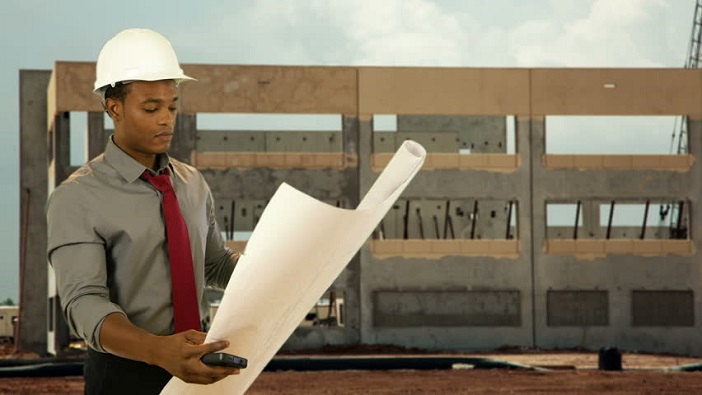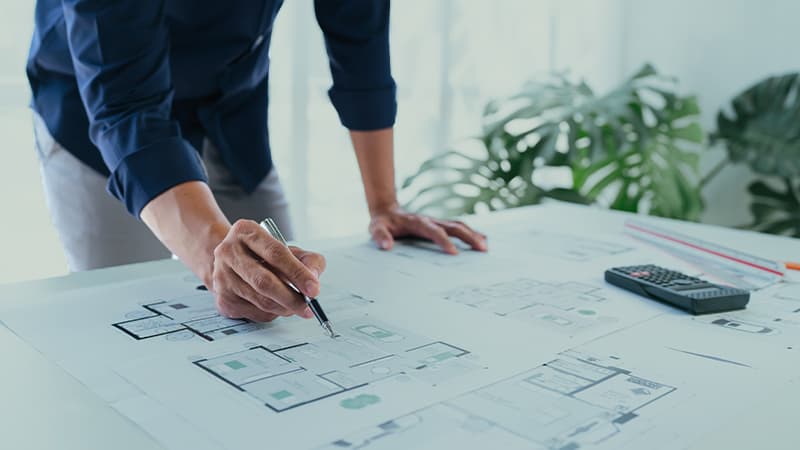Architect Insights on Balancing Form and Function
Architect Insights on Balancing Form and Function
Blog Article
Recognizing the Diverse Career Paths Available for Aspiring Architect
As a hopeful Architect, you have a globe of career paths waiting for you. Whether you're attracted to typical architecture or the subtleties of lasting style, there's a niche that lines up with your passions.
Standard Architecture: Designing Buildings and Frameworks
Typical style concentrates on creating structures and frameworks that mix performance with visual appeal. Your designs can mirror cultural heritage, showcasing neighborhood customs while fulfilling contemporary needs.
You'll create skills in composing, model-making, and site analysis, enabling you to imagine and connect your ideas effectively. Involving with clients, you'll require to recognize their vision and convert it right into possible layouts.
Additionally, developing codes and sustainability techniques are important in your work, guaranteeing your frameworks are environmentally friendly and safe. As you expand in your career, you'll locate possibilities in property, business, or perhaps repair projects, each offering special difficulties. Accepting conventional style leads the means for a satisfying profession that pays tribute to the past while forming the future.
Urban Planning: Shaping Communities and Public Spaces
As an ambitious Architect, you can play an essential duty as a metropolitan organizer, changing exactly how areas operate and engage. By employing neighborhood engagement techniques, you'll assure that homeowners have a voice in forming their setting. Plus, integrating sustainable layout principles will help develop rooms that not only fulfill today's demands however additionally secure the future.
Role of Urban Planners
While numerous might believe of architects as the sole visionaries behind buildings, city organizers play a necessary function in shaping the more comprehensive landscape of areas and public rooms. They evaluate land use, zoning laws, and area needs to produce sustainable environments that enhance lifestyle. By working together with different stakeholders, you'll help design parks, transportation systems, and houses that promote social interaction and accessibility. Urban planners additionally concentrate on ecological factors to consider, guaranteeing that developments integrate environment-friendly spaces and support biodiversity. Your proficiency in spatial layout and neighborhood characteristics enables you to imagine future growth while preserving social heritage. In this critical role, you'll directly influence how individuals experience their environments, making every task a possibility for favorable modification.
Neighborhood Interaction Methods
Reliable neighborhood engagement techniques are important for urban coordinators to assure that the voices of homeowners are listened to and valued in the planning procedure. To promote purposeful discussion, you ought to prioritize open discussion forums and workshops where area participants can express their concepts and problems. By proactively incorporating and listening comments, you'll produce rooms that reflect the community's requirements, eventually leading to even more lasting and successful urban environments.
Sustainable Design Concepts
When designing urban spaces, including lasting layout concepts is crucial for producing environments that thrive both environmentally and socially. You need to start by concentrating on power effectiveness, using materials that minimize waste and advertise recycling. Consider incorporating green rooms, like yards and parks, to enhance biodiversity and improve air quality. Advertising walkability and public transport can lessen reliance on automobiles, fostering a much healthier community.
Creating with water preservation in mind is additionally essential-- consider rainfall gardens and permeable surface areas to take care of stormwater. Involving neighborhood members throughout the planning procedure warranties that the rooms you develop satisfy their demands and urge social interaction. By embracing these principles, you'll add to vibrant, lasting urban landscapes that benefit everyone.

Landscape Design: Producing Lasting Exterior Atmospheres
As you check out landscape design, you'll uncover essential layout concepts that create stunning and practical outside areas. Sustainable techniques play an important function in making sure these atmospheres prosper while reducing environmental impact. And also, you'll locate a range of profession opportunities that permit you to make a real distinction in how individuals communicate with nature.
Design Concepts in Landscape
Understanding style concepts in landscape architecture is necessary for creating lasting exterior settings that balance with nature. You'll need to ponder aspects like balance, range, and proportion to assure your designs really feel cohesive and inviting. Incorporating native plants not just improves biodiversity however also decreases water use, making your landscape resistant. Think of the circulation of room and how people communicate with it; pathways and seating locations need to welcome exploration and relaxation. Furthermore, take notice of seasonal changes, developing with materials that enhance the surroundings year-round (Architect). By prioritizing sustainability and visual appeals, you can produce outdoor areas that enhance the area and advertise wellness. Accepting these principles will certainly establish a solid structure for your career in landscape design.
Lasting Practices Review
Lasting techniques in landscape architecture not only concentrate on looks yet likewise focus on eco-friendly health and resource conservation. By integrating indigenous plants, you enhance biodiversity and lower the requirement for chemical fertilizers and pesticides. Applying effective irrigation systems aids save water and decreases drainage, shielding nearby ecosystems. You can create areas that advertise dirt wellness, such as making use of organic materials and practicing permaculture concepts. Additionally, Get More Information including green facilities, like rainfall yards and porous pavements, help in stormwater management and minimizes metropolitan heat. When you produce outside environments with sustainability in mind, you add to a healthier earth and give areas that promote community link. Inevitably, these practices ensure your designs benefit both people and the atmosphere for many years to come.
Occupation Opportunities Expedition
With a solid foundation in lasting practices, landscape architecture uses a range of job courses that permit you to make a significant influence on the setting. Urban coordinators frequently collaborate with landscape engineers to create environment-friendly spaces in city settings, enhancing city livability. If you're enthusiastic concerning education and learning, take into consideration ending up being a landscape architecture instructor, motivating future generations.
Lasting Layout: Concentrating On Eco-Friendly Practices
As you explore your occupation in design, embracing environment-friendly practices can establish you apart in an affordable area. Lasting design focuses on producing structures that reduce environmental impact while boosting passenger well-being. By incorporating eco-friendly products, energy-efficient systems, and sustainable structure strategies, you'll add to a greener future.
Begin by getting expertise of eco-friendly accreditations like LEED or BREEAM, which can reinforce your qualifications. Consider just how natural light, air flow, and thermal effectiveness can optimize layout. Team up with designers and ecological consultants to innovate remedies that minimize waste and preserve sources.
Don't forget the relevance of area participation-- appealing neighborhood stakeholders can inspire designs that integrate with the environment. As clients progressively focus on sustainability, your expertise in eco-friendly practices will certainly not just bring in jobs yet additionally satisfy your enthusiasm for liable architecture. Embrace this essential aspect of the profession, and view your job grow.
Historical Preservation: Protecting and Recovering Cultural Heritage
While you begin on your architectural trip, think about the important role of historical preservation in maintaining our social heritage. This area concentrates on the security and reconstruction of significant structures, sites, and frameworks that inform the tales of our past. By engaging in historical conservation, you'll help guard the building legacy that shapes neighborhood identity.
As a historical conservation Architect, you'll examine historic significance and evaluate the problem of frameworks. You'll function carefully with conservationists and chroniclers to assure authentic remediation check over here strategies are employed. This job path allows you to blend creativity with study, allowing you to make solutions that appreciate original products and workmanship.
Your job not just adds to sustainability by reusing existing buildings but likewise promotes a feeling of pride within areas. Welcoming this path will certainly assist you come to be a guardian of history, protecting the tales and looks that improve our lives.
Inside Architecture: Enhancing Indoor Spaces
Historical conservation and interior design both share a commitment to improving the developed setting, however they concentrate on various elements. While historic conservation highlights keeping a structure's cultural and historical value, indoor style absolutely nos in on maximizing indoor areas for performance and appearances.
As an ambitious Architect, you'll locate that interior style allows you to blend creativity with technological abilities. You'll design rooms that not just look good but also promote comfort and performance. This area involves understanding exactly how light, shade, and materials communicate within a room, affecting mood and functionality.
You'll work on various tasks, from household homes to business offices, guaranteeing that each setting fulfills the demands of its occupants. By prioritizing customer experience, you can change interiors into motivating and functional areas, making a considerable effect on how people interact with their surroundings. Embrace the chance to improve interior settings and form the means people live and work.
Industrial Style: Merging Functionality With Aesthetics
Commercial layout plays a crucial duty in producing items that effortlessly blend aesthetic appeals with performance, ensuring that what you utilize daily is not just visually enticing yet likewise useful. As a hopeful Architect, you might immerse on your own in this field, concentrating on creating everything from furnishings to customer electronic devices. Your job entails comprehending user requirements, materials, and manufacturing procedures, allowing you to produce innovative remedies that boost everyday experiences.
In industrial design, you'll usually collaborate with marketers, designers, and suppliers, ensuring that your designs are not just beautiful yet likewise feasible. This job path provides a vibrant environment where creative thinking fulfills practicality, making it a fulfilling selection for i thought about this designers interested in forming the products of tomorrow.
Often Asked Concerns
What Educational Accreditations Do I Need to Come To Be a Designer?
To become an engineer, you'll need a specialist degree in design, usually a Bachelor's or Master's. Furthermore, you'll need to complete a teaching fellowship and pass the Architect Registration Assessment to exercise lawfully.
Are There Qualification Requirements for Different Building Job Paths?
Yes, there're accreditation requirements for numerous architectural paths. Architect. You'll require to pass examinations, full teaching fellowships, and occasionally go after specialized training, relying on your chosen emphasis, like landscape design, city layout, or historical preservation
What Software Program Abilities Are Necessary for Engineers Today?

How Can I Gain Practical Experience While Researching Design?
You can gain practical experience by interning at architectural companies, taking part in layout competitions, volunteering for neighborhood projects, or working together with schoolmates on real-world assignments. These chances improve your abilities and construct important links in the sector.
What Task Opportunities Exist Outdoors Traditional Design Firms?
You can discover different work opportunities outside conventional architecture firms, like urban preparation, interior style, landscape style, building administration, realty development, and even functions in sustainability consulting. Each offers one-of-a-kind obstacles and benefits.
Whether you're attracted to conventional design or the subtleties of sustainable layout, there's a niche that straightens with your passions.When designing urban areas, integrating sustainable design concepts is vital for producing atmospheres that flourish both environmentally and socially.As you check out landscape style, you'll uncover crucial design concepts that create stunning and functional outside spaces.Comprehending design principles in landscape architecture is crucial for creating lasting outdoor atmospheres that balance with nature.In industrial style, you'll usually team up with makers, marketing experts, and designers, making sure that your styles are not only beautiful but also practical.
Report this page